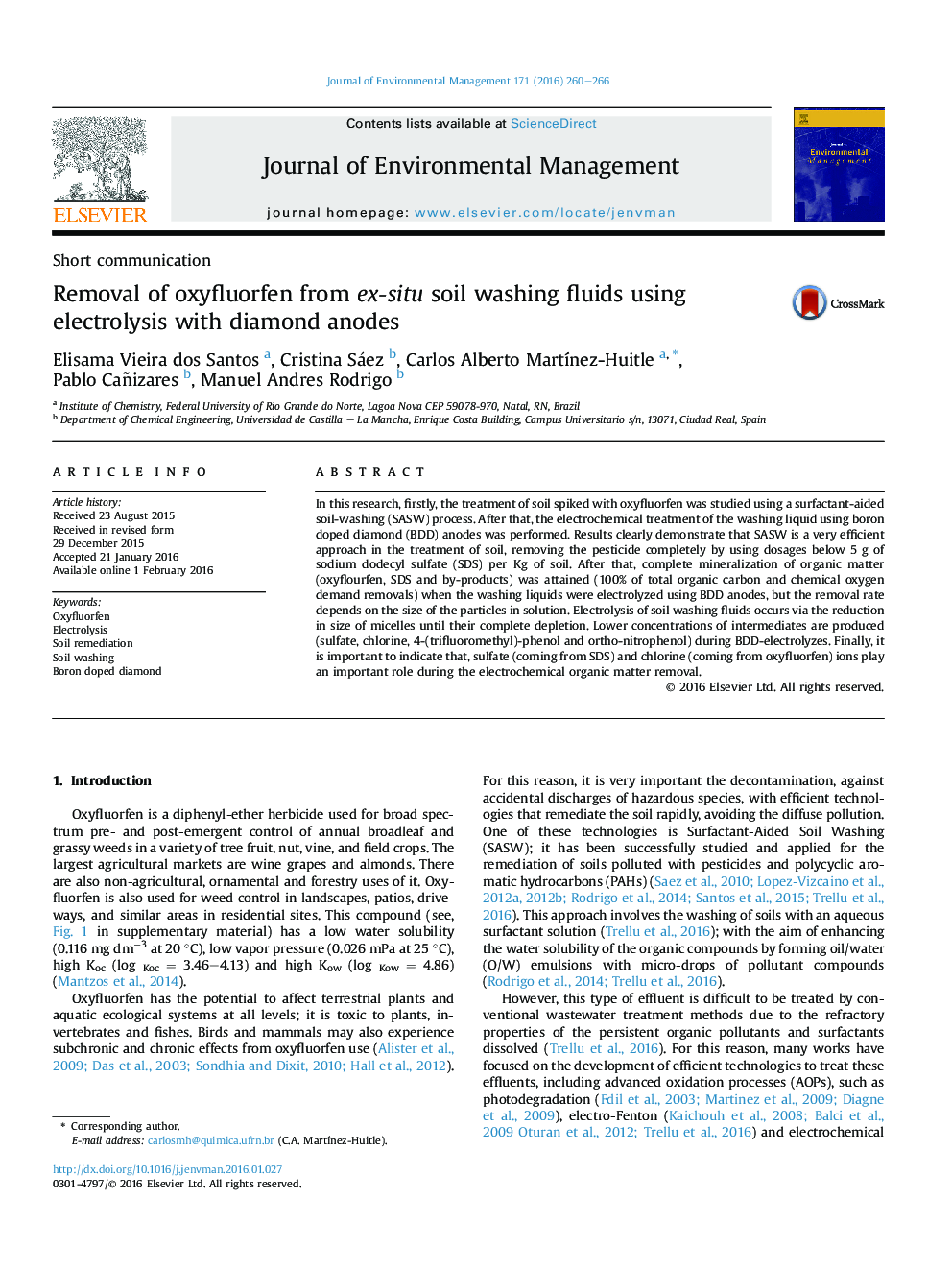| Article ID | Journal | Published Year | Pages | File Type |
|---|---|---|---|---|
| 1055318 | Journal of Environmental Management | 2016 | 7 Pages |
•SASW with SDS surfactant is an efficient technology for removing oxyfluorfen from spiked clay soils.•BDD anodic oxidation is very efficient for the treatment of SASW effluents containing oxyfluorfen.•Electrolysis of soil washing fluids proceed though the reduction in size of micelles.•Key role is played by sulfate and chlorine released from SDS and oxyfluorfen.
In this research, firstly, the treatment of soil spiked with oxyfluorfen was studied using a surfactant-aided soil-washing (SASW) process. After that, the electrochemical treatment of the washing liquid using boron doped diamond (BDD) anodes was performed. Results clearly demonstrate that SASW is a very efficient approach in the treatment of soil, removing the pesticide completely by using dosages below 5 g of sodium dodecyl sulfate (SDS) per Kg of soil. After that, complete mineralization of organic matter (oxyflourfen, SDS and by-products) was attained (100% of total organic carbon and chemical oxygen demand removals) when the washing liquids were electrolyzed using BDD anodes, but the removal rate depends on the size of the particles in solution. Electrolysis of soil washing fluids occurs via the reduction in size of micelles until their complete depletion. Lower concentrations of intermediates are produced (sulfate, chlorine, 4-(trifluoromethyl)-phenol and ortho-nitrophenol) during BDD-electrolyzes. Finally, it is important to indicate that, sulfate (coming from SDS) and chlorine (coming from oxyfluorfen) ions play an important role during the electrochemical organic matter removal.
